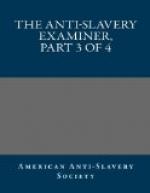“We request that our presentment be published in the Miners’ Recorder and Federal Union.
JOHN MARTIN, Foreman”
On motion of Henry L. Sims, Solicitor General, “Ordered by the court, that the presentments of the Grand Jury, be published according to their request.” THOMAS HENRY, Clerk.
The same paper, four weeks after publishing the preceding facts, contained the following: we give it in detail as the wretch who enacted the tragedy was another public functionary of the state of Georgia and acting in an official capacity.
“MURDER.—One of the most brutal and inhuman murders it has ever fallen to our lot to notice, was lately committed in Cherokee county, by Julius Bates, the son of the principal keeper of the Penitentiary, upon an Indian.
“The circumstances as detailed to us by the most respectable men of both parties, are these. At the last Superior Court of Cass county, the unfortunate Indian was sentenced to the Penitentiary. Bates, as one of the Penitentiary guard, was sent with another to carry him and others, from other counties to Milledgeville. He started from Cassville with the Indian ironed and bare footed; and walked him within a quarter of a mile of Canton, the C.H. in Cherokee, a distance of twenty-eight to thirty miles, over a very rough road in little more than half the day. On arriving at a small creek near town, the Indian [who had walked until the soles of his feet were off and those of his heel turned back,] made signs to get water, Bates refused to let him, and ordered him to go on: the Indian stopped and finally set down, whereupon Bates dismounted and gathering a pine knot, commenced and continued beating him and jirking him by a chain around his neck, until the citizens of the village were drawn there by the severity of the blows. The unfortunate creature was taken up to town and died in a few hours.
“An inquest was held, and the jury found a verdict of murder by Bates. A warrant was issued, but Bates had departed that morning in charge of other prisoners taken from Canton, and the worthy officers of the county desisted from his pursuit, ’because they apprehended he had passed the limits of the county.’ We understand that the warrant was immediately sent to the Governor to have him arrested. Will it be done? We shall see.”
Having devoted so much space to a revelation of the state of society among the slaveholders of Georgia, we will tax the reader’s patience with only a single illustration of the public sentiment—the degree of actual legal protection enjoyed in the state of North Carolina.
North Carolina was settled about two centuries ago; its present white population is about five hundred thousand.
Passing by the murders, affrays, &c. with which the North Carolina papers abound, we insert the following as an illustration of the public sentiment of North Carolina among ’gentlemen of property and standing.’




